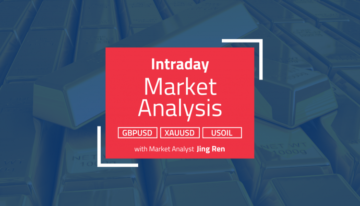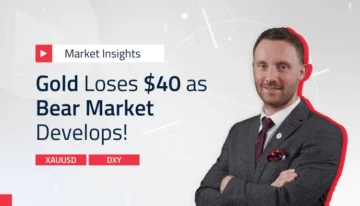It’s an axiom at this point that the US economy gets a little bit of a boost during election years. Though for forex traders, what exactly happens to the dollar is more important. Traditional thinking might suggest that if the economy is doing better, then the currency will be stronger.
But, when politicians get involved, things are not so straight-forward. Also, for the record, being in an election year doesn’t make the economy immune to a recession. In fact, the last major recession – the sub-prime crisis – hit bottom just before the 2008 election. So, it’s more accurate to say that politicians try to make the economy do better in an election year. And those efforts can have some important effects on the currency markets, which is what we’re more concerned with.
The Slow Decline of the Dollar
There were already reasons to expect the dollar to be weaker this year. The main one, of course, is the expectation that the Fed will move to ease monetary policy. There is plenty of debate of just how much easing will happen, but lower interest rates would naturally imply a weaker dollar.
But there is more to it than just the Fed. The issue is the evolution of bond yields. That is ultimately what attracts traders to buying or selling dollars. If yields fall, then there is less motivation to buy dollars to invest in bonds. If yields rise, then they offer a better return on investment, which pushes up the dollar.
Who’s the Most Influential
Yields respond to supply and demand. If there are a lot of bonds being sold, then yields will have to rise in order to attract more investors. The supply of bonds is regulated by two main entities: The US Treasury, which issues bonds in order to obtain money to finance its (ever growing) debt. And the Fed, which is selling bonds at a steady rate in order to push up interest rates.
If the Fed were to tweak its bond selling program through the course of the year, then that would likely affect yields. But, the Fed is dealing with $270B a quarter in bonds. The Treasury has been issuing up to four times that amount. Therefore, how much bonds the government decides to sell can have a much bigger impact on the interest rate than what the Fed does with its QT program.
Why the Weakness?
The expectation is that the Treasury would issue a lot of bonds this year to finance a large federal deficit. That would be inclined to push yields (and therefore the dollar) higher. But that would make economic conditions more difficult.
What the Treasury could do, and appears to be doing, is planning to sell fewer bonds during the election year. That would help keep yields lower and support the economy. In the latter half of last year, the markets were dismayed to see the Treasury announcing it would borrow $1.86T. This contributed to higher yields in 2023. But for the first half of 2024, the plan is to borrow half of that at $962B, and still have $750B left over in reserves. Which means the Treasury could borrow even less in the third quarter.
The Treasury built up $842B in cash over the second half of last year, more than double its usual (pre pandemic) amount. This gives the government room to not have to borrow through the months leading up to the election, which would allow yields on US treasuries to drift lower. It’s another factor that could combine with easing at the Fed to push interest rates lower and weigh on the dollar.
Trading the news requires access to extensive market research – and that’s what we do best.
- SEO Powered Content & PR Distribution. Get Amplified Today.
- PlatoData.Network Vertical Generative Ai. Empower Yourself. Access Here.
- PlatoAiStream. Web3 Intelligence. Knowledge Amplified. Access Here.
- PlatoESG. Carbon, CleanTech, Energy, Environment, Solar, Waste Management. Access Here.
- PlatoHealth. Biotech and Clinical Trials Intelligence. Access Here.
- Source: https://www.orbex.com/blog/en/2024/02/is-a-weaker-dollar-inevitable-in-an-election-year
- :has
- :is
- :not
- $UP
- 2008
- 2023
- 2024
- a
- access
- accurate
- affect
- allow
- already
- also
- amount
- an
- and
- Announcing
- Another
- app
- appears
- ARE
- At
- attract
- Attracts
- BE
- been
- before
- being
- BEST
- Better
- bigger
- Bit
- Blog
- bond
- Bond yields
- Bonds
- boost
- borrow
- Bottom
- built
- but
- buy
- buy dollars
- Buying
- by
- CAN
- Cash
- combine
- concerned
- conditions
- contributed
- could
- course
- crisis
- Currency
- currency markets
- dealing
- debate
- Debt
- Decline
- DEFICIT
- Demand
- difficult
- do
- does
- Doesn’t
- doing
- Dollar
- dollars
- double
- during
- ease
- easing
- Economic
- Economic Conditions
- economy
- effects
- efforts
- Election
- entities
- Ether (ETH)
- Even
- EVER
- evolution
- exactly
- expect
- expectation
- extensive
- fact
- factor
- Fall
- Fed
- Federal
- fewer
- finance
- First
- For
- forex
- Forex Trading
- four
- get
- gets
- gives
- Government
- Growing
- Half
- happen
- happens
- Have
- help
- higher
- Hit
- How
- HTTPS
- if
- image
- immune
- Impact
- important
- in
- Inclined
- inevitable
- interest
- INTEREST RATE
- Interest Rates
- Invest
- investment
- Investors
- involved
- issue
- issues
- issuing
- IT
- ITS
- just
- Keep
- large
- Last
- Last Year
- leading
- left
- less
- likely
- little
- live
- Lot
- lower
- Main
- major
- make
- Market
- market research
- Markets
- means
- might
- Mobile
- Mobile app
- Monetary
- Monetary Policy
- money
- months
- more
- most
- Motivation
- move
- much
- naturally
- news
- obtain
- of
- offer
- on
- ONE
- or
- order
- over
- pandemic
- plan
- planning
- plato
- Plato Data Intelligence
- PlatoData
- Plenty
- Point
- policy
- Politicians
- pre
- Program
- Push
- pushes
- QT
- Quarter
- Rate
- Rates
- reasons
- recession
- record
- regulated
- requires
- research
- reserves
- Respond
- return
- Rise
- Room
- say
- Second
- see
- sell
- Selling
- slow
- So
- sold
- some
- steady
- Still
- stronger
- suggest
- supply
- Supply and Demand
- support
- than
- that
- The
- the Fed
- then
- There.
- therefore
- they
- things
- Thinking
- Third
- this
- this year
- those
- though?
- Through
- times
- to
- Traders
- Trading
- traditional
- Treasuries
- treasury
- tweak
- two
- Ultimately
- URL
- us
- US economy
- us treasuries
- US Treasury
- usual
- we
- weaker
- weakness
- weigh
- were
- What
- when
- which
- will
- with
- would
- year
- years
- yields
- zephyrnet












